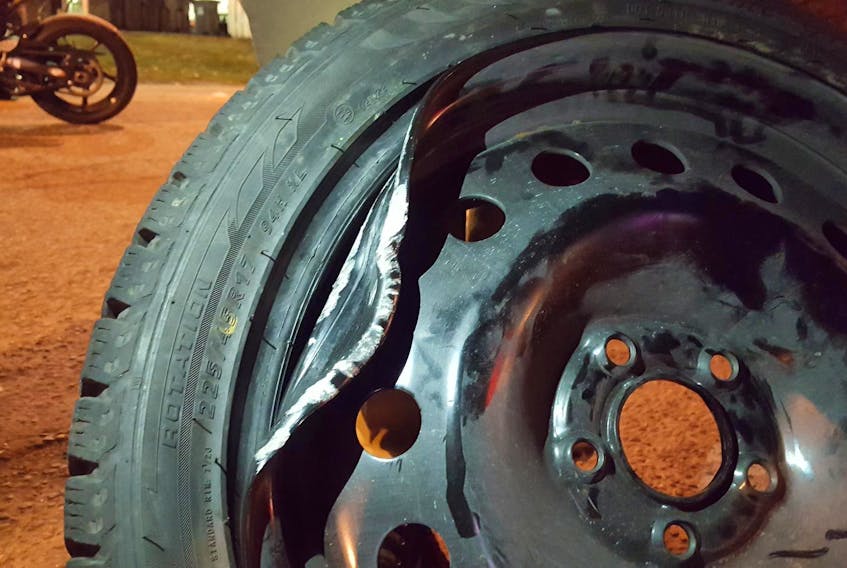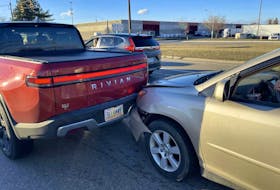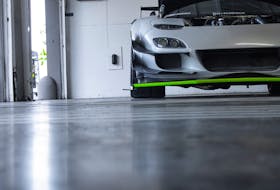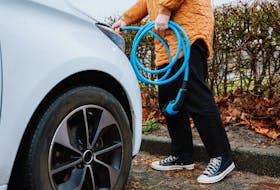It’s pothole season right across the country and motorists from coast to coast are regularly snapping struts, obliterating ball joints, and blowing tires on the crumbling asphalt that pass for roads in many Canadian locales.
Your writer is a long-time resident of Sudbury, Ont., a city about four hours north of Toronto that’s earned numerous places on the annual CAA list of Canada’s Worst Roads over the years.
Every car I review is tested, extensively, on these roads.
I’ve suffered a half-dozen pothole-related blowouts in recent years, as have numerous friends and family members.
Hopefully, the roads wherever you’re reading from are in better shape than ours.
Still, I’d like to present the following tips, thoughts and facts to bear in mind when travelling around this pothole season.
Blowout Now, or Blowout Later
It’s important to remember that pothole strikes can cause lasting damage to your tires, even if they don’t result in an immediate blowout.
This means that a pothole strike can injure your tire, wheel, suspension or steering system in a way that may cause a blowout, failure or collision at a later date.
One pothole may damage your tire, and a second or third one may cause the blowout.
Maybe, a pothole strike causes damage that results in tire failure some months later, perhaps while you’re travelling with your family and a trailer in tow.
To prevent a serious accident, inspect your vehicle (and especially its tires) for signs of damage, regularly. Seek professional help if you’re unsure how.
Signs of Trouble

There are numerous ways that a pothole strike can damage your vehicle, and some warning signs can be taken as your cue to have a professional assess it.
Sloppy steering feel, a vehicle that “pulls” to one side or the other, or a clunking, popping, banging or snapping sound from beneath your vehicle as it drives over bumps are all signs of damage.
Inspect tires regularly for signs of tire damage, which may include cuts, gouges, tears, missing pieces, or rounded bulges in the tire sidewalls.
Each of these can be taken as a sign that the tire in question requires immediate replacement, and continued driving on a damaged tire puts you, your passengers, and your fellow motorists at risk.
Unavoidable Impact?
If you realize a severe pothole strike is unavoidable, consider applying as much braking as possible to lower your speed, but release the brakes in full, at the last possible moment before the impact.
You’ll hit the pothole more slowly, and releasing the brakes allows the tire to roll more easily over it, which may reduce damage.
Also, hard braking makes the front of your vehicle heavier, so releasing the brakes at the last moment helps lighten the impact and damage your tires, wheels, and suspension will suffer.
After a severe impact with a pothole, pull over as soon as you can to check for signs of damage to your tires and wheels.
Pothole Dodging and Safe Vision
Looking as far up the road as possible, at all times, is vital to safety at the wheel.
Unfortunately, that’s not possible when drivers are actively trying to dodge pothole-covered roads, and therefore, are looking just ahead of their vehicle’s hood.
When driving on pothole-covered roads, assume that drivers near you are looking at the road, not the traffic.
Drive accordingly, taking steps to leave more room around you, and to drive as defensively as possible.
Your Trip is Over
Confirm which spare tire provisions your vehicle has. Some vehicles use a proper spare tire, while others use an inflater and sealant kit, or “run-flat” tires, as an alternative to a physical spare tire and wheel.
Inflater kits (sometimes called “mobility kits”) and run-flat tires are designed to maintain some degree of mobility in the event of a small to moderate puncture, perhaps from a nail or bolt, in the treaded surface of the tire.
Conversely, pothole-related blowouts tend to be catastrophic and leave the affected tire with a massive gouge or split that often compromises the tire sidewall.
The gist? A physical spare tire and wheel is ideal and if you’re on run-flat tires, or if your vehicle has a mobility kit, a pothole-related blowout will likely end your trip dead in its tracks.










